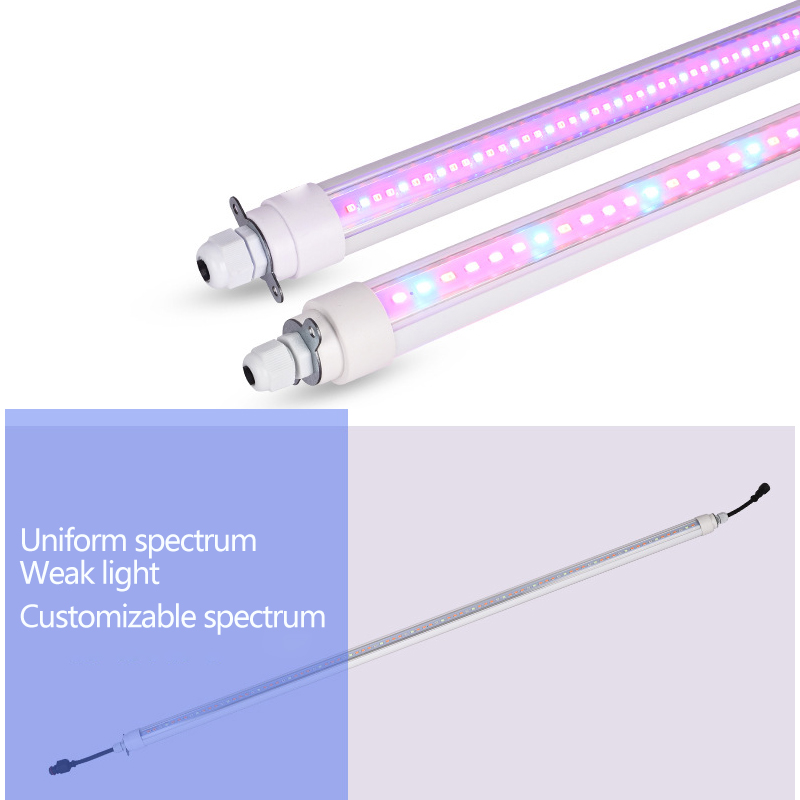Intra-canopy illumination is an extra technique to improve production with the same footprint.” It’s possible that the problem is due to intra-canopy illumination. According to new research done by Leo Marcelis, his team at Wageningen UR, and Present investigators, intra-canopy LED illumination can enhance productivity by 14% even when light intake is still the same. The plant’s underutilized design may now be used as an energy source thanks to intra-canopy illumination.” Intra-canopy lighting is intended to be used within the vine canopy. They’re most commonly used to connect two canopies in a double row or to connect bifurcation plants.
The light intensity within the canopy improves when intra-canopy lighting is used, allowing older, but still fully functioning and productive leaves to photosynthesize more and produce more fruit. Intra-canopy lighting isn’t usually utilized to augment light for greenhouse crops on their own. In most cases, intra-canopy lighting is utilized to augment standard overhead illumination sources. When both are employed, however, the quantity of additional illumination provided by the above lights or the number of overhead fixtures may be lowered.

Because there are various producers of intra-canopy lighting, it’s essential to look into their track records. There is a broad range of spectroscopic components available, similar to many of the LED lights available today, with red as the dominant spectrum and supplementary blue and/or white light as well. One thing to keep in mind is the convenience of your employees.
There may be greater directly exposed to blue light depending on the mounting height of the intra-canopy lighting in relation to your owner’s typical eye level. Intra-canopy lighting will most likely be mounted at a height and angle that puts them in close proximity to employee lines of sight, and blue light can be uncomfortable for individuals working near to them without sufficient protective eyewear. Intra-canopy lighting has more complicated economics, and you’ll have to figure out whether it’s affordable for you.
According to many research, the energy costs involved with running intra-canopy lighting can be compensated by increased yields due to the extra light. As a result, the most important aspect is the initial capital investment in the lighting as well as the implementation expenses. This is a more difficult issue to answer since the cost of your intra-canopy lighting is determined by your preferred option, who you buy from, how many you buy at once, and other considerations.
Some Useful intra-canopy lights:
For photosynthetic irradiance, greenhouse cultivation has historically depended on overhead HID lights. Overhead illumination, on the other hand, tends to prefer upper leaf layers in order to increase light interception incidents at the foliar canopy’s top. As a result, reciprocal shadowing occurs in the lower leaf canopy, limiting the amount of PAR provided to a crop. Intra-canopy lighting allows direct lighting into the interior canopy of agricultural stands, increasing irradiation efficiency. It has been claimed that in growth chambers for crops such as cowpea and soybean, ICL may be used as the only source of radiation. Some other electricity feature of ICL lights is that they may be separately powered at various vertical planes, depending on their design. This enables lights to keep up with the phases of growth of tall crops such as unpredictable tomatoes.
However, for the development and output of high-wire tomatoes in commercial greenhouses in the United States, no direct comparison of ICL from LEDs vs. overhead HPS illumination has been documented. In addition, a cost and performance comparison with typical HID horticulture lighting is required. The goal of this study was to examine high-wire tomato production with and without supplemental lighting, as well as to assess the effects of two distinct lighting locations and sources (HPS-OHL vs. LED-ICL) on various electricity and resource usage metrics.
In the spring greenhouse tomato, the contribution of LED intra-canopy illumination is being investigated:
One of the greatest areas for electric lighting in horticulture purposes is vine crops, notably tomatoes and cucumbers. Because cultivators aren’t as restricted by poor illumination in the spring and summer as they are in the winter, many farmers don’t utilize additional lighting during these months. LED lighting solutions, on the other hand, are becoming much more efficient and cost-effective, and they can be securely installed within the canopy without harming the plants. This offers up new possibilities for using additional illumination in the lower reaches of the crop canopy, where leaves are more likely to be shaded. The focus of this research is to see how additional intra-canopy illumination affects greenhouse tomato output in the spring and summer, taking into consideration both morphological and photosynthetic impacts.
Electric supplementary lighting may make up a large amount of total greenhouse energy expenses light-emitting diode (LED) intra-canopy lighting (ICL) towers] on several production and energy-consumption parameters for two commercial tomato cultivars. Supplemental illumination triggered early fruit production and increased node number, fruit number (FN), and total fruit fresh weight (FW) for both cultivars compared to supplemented controls over a winter-to-summer production process, irrespective of lighting location + source.
In addition, no changes in productivity were seen between the two supplementary illumination regimens. The electrical conversion efficiency of light-emitting intra- canopy lighting (LED-ICL) into fruit bioenergy was 75 percent greater than that of HPS-OHL, according to the power generation metrics. As a result, the lighting cost per typical fruit grown under HPS-OHL lights was 403 percent more than when LED-ICL towers were used. Even though LED-ICL did not result in an increase in production, it did result in considerable energy savings for lighting without sacrificing fruit output.
Read more: What Agriculture Fixtures Light to Use During the Growing Season?
Conclusion:
Greenhouse illumination for hydroponic vine crops is changing thanks to the introduction of intra-canopy LEDs. Intra-canopy lighting provides greater opportunities for better output and quality during low-light times of the year.



